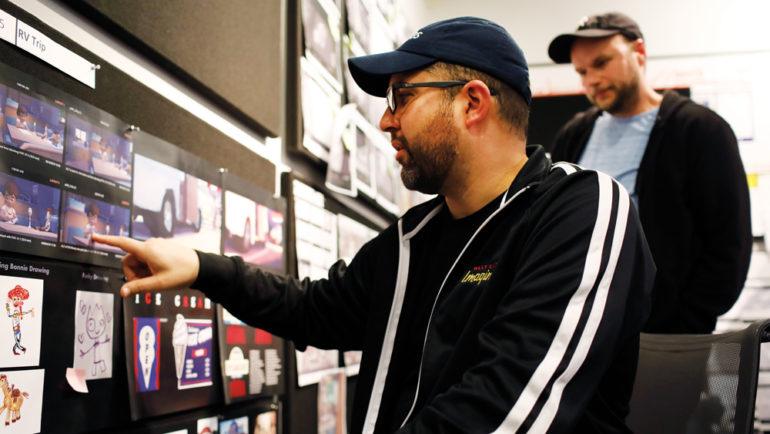How Pixar Crew Refined Complicated Details in ‘Toy Story 4’
By Tom Mclean
LOS ANGELES (Variety.com) – Back in the mid-’90s, when Pixar was creating the world’s first computer-animated feature, the seminal “Toy Story,” the process was by necessity a collaborative one. Any of the 129 crew members could shout down the hallway with a question and get a quick response.
That spirit of collaboration persisted through the making of “Toy Story 2” (1999) and “Toy Story 3” (2010), and comes full circle with “Toy Story 4,” which Disney will release in the U.S. on June 21. For the latest iteration, found new ways to break down the walls between departments and allow crew to collaborate comprehensively on ambitious elements, including what’s believed to be the most complicated set in Pixar history — a realistic, dust-filled antiques mall stocked with 10,000 digital props.
“We got everybody together, almost every day, from every department, in a screening room for at least an hour to just look at scenes in context so that they could discuss the work left to do [and see] what’s missing, what could be better,” says producer Jonas Rivera. “We found you could work so much more efficiently when you’re all judging the work that you’re doing in the context of a scene — not just a shot, not just an object, but running it all as a scene and making those decisions with the big picture in mind.”
Animators and artists got feedback that related more to an entire scene instead of pixel-specific criticism of elements likely to go unseen in the final shot. The strategy led artists to establish the basics of a shot more quickly, which gave them more time to perfect it.
Animators spent about 10 times more of their time finessing performances on “” than on the original, says Bill Reeves, global technology supervisor at Pixar. “The differences are subtle,” he says. “You almost feel it rather than see it.” Director Josh Cooley says the process made no small contribution to the ultimate goal of telling the story: “Little short cuts like that make a huge difference.”
The latest story finds cowboy Woody (voiced by Tom Hanks) and hastily assembled newcomer Forky (Tony Hale) stranded far from home and finding help from old friend Bo Peep (Annie Potts) and Canadian stunt toy Duke Caboom (Keanu Reeves) even as they confront a new threat in damaged vintage baby doll Gabby Gabby (Christina Hendricks). Meanwhile, the rest of the gang, led by Buzz Lightyear (Tim Allen), traverse a carnival setting to find and help their pals.
In filling the antiques mall, some props were reused — viewers should be able to spot at least one from each previous Pixar movie — but the vast majority had to be created from scratch. Supervising technical director Bob Moyer says a single prop takes anywhere from a few hours to a few weeks to make, and it took nearly two years to fully stock the set.
Sets technical director Rosie Cole tapped into her memories of an antiques mall owned by her family, adding “neighborhoods” within the shop, including a shabby-chic area and the cabinet in which Gabby has been stored for years. The props’ vintage nature required them to have rust, scratches, chips and other defects. There also were many reflective and refractive surfaces, such as silverware, glass vases and bottles, which were challenging to render correctly, even before layers of dust were added.
Spiders with artificial intelligence were created to add cobwebs to the musty and dusty corners of the shop, says Thomas Jordan, sets supervisor. “You have to tell the spider where the connection points of the cobweb should go, but then it does the rest.”
Even the building housing the antiques mall was given its own backstory as a former auto parts and furniture store, says Stephen Karski, sets supervisor. Scale was checked to ensure it worked for both human and toy perspectives, and the materials used to create similar buildings were examined down to irregularities in the setting of tiles.
Other new technology used on the movie includes animation and rigging systems capable of animating soft plush-toy characters Ducky (Keegan-Michael Key) and Bunny (Jordan Peele), as well as creating a unique look for Bo Peep’s porcelain finish; an updated version of Pixar’s proprietary RenderMan software, with full-on ray tracing for more complex and realistic lighting; and advances in digital cinematography that provide for extreme depth of field and allowed “Toy Story 4” to be Pixar’s first feature shot in widescreen.
While the technology and personnel change over time, the studio’s overall goals remain the same, says Bob Pauley, production designer. “All these skills and tools are there in service of the story,” he says. “If we don’t have a great story to tell, all the tools in the world aren’t going to help you.”

